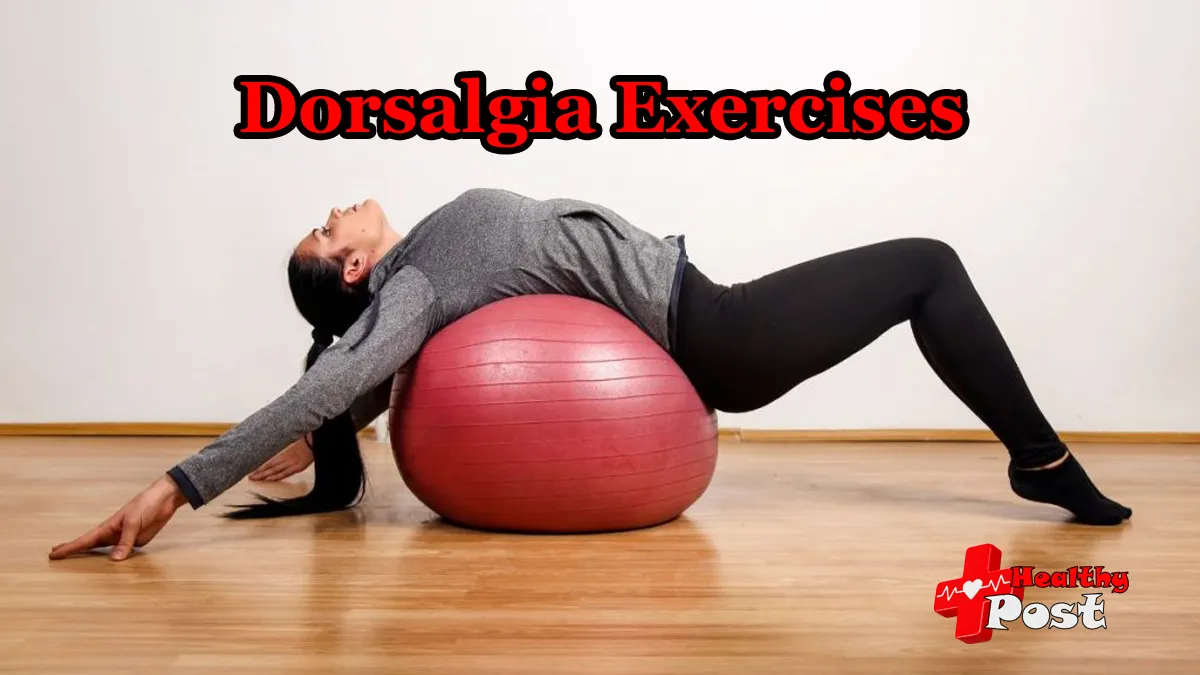
8 Powerful Dorsalgia Exercises That Actually Work
Living with dorsalgia—a term that simply means back pain—can feel frustrating, exhausting, and even isolating at times. If you’ve ever had that dull ache after sitting too long or a sharp pain that stops you in your tracks, you’re not alone. Millions of people experience dorsalgia in different forms, from mild discomfort to chronic pain that affects daily life.
The good news? You don’t have to suffer in silence. While medication and medical care play their roles, gentle and targeted dorsalgia exercises can make a world of difference. In this article, we’ll walk you through 8 powerful exercises that can relieve stiffness, improve flexibility, and strengthen the muscles that support your back.
But before we dive in, let’s quickly clear up some basics about dorsalgia so you know exactly what we’re dealing with.
🤔 What Is Dorsalgia?
In simple words, dorsalgia refers to pain that originates in the spine. It can affect different areas:
- Cervical dorsalgia – pain in the neck region
- Thoracic dorsalgia – pain in the upper or mid-back
- Lumbar dorsalgia – pain in the lower back (the most common)
Sometimes doctors may use the term dorsalgia unspecified if they can’t pinpoint the exact location or cause of the pain.
And if you’ve come across dorsalgia ICD-10, that’s just the medical coding used for diagnosis in healthcare systems. For example, “M54.9” is the code for unspecified dorsalgia.
The important thing to remember is that no matter what type you have, movement is medicine. The right exercises can ease pain, improve posture, and even prevent flare-ups.
✅ Why Exercises Work for Dorsalgia
Many people think resting is the solution to back pain. While short-term rest can help, staying inactive often makes dorsalgia worse. Movement increases blood flow, strengthens supportive muscles, and reduces stiffness.
Here’s how dorsalgia exercises specifically help:
- Loosen tight muscles that strain the back
- Improve spinal flexibility for daily movement
- Strengthen core muscles, which stabilize your spine
- Reduce stress, since exercise also calms the nervous system
- Boost confidence, helping you feel in control of your pain
Now, let’s get into the exercises that actually make a difference.
🏋️ 8 Powerful Dorsalgia Exercises That Actually Work
These exercises are gentle, beginner-friendly, and require little to no equipment. Try to practice them at least 3–4 times per week for the best results.
1. Cat-Cow Stretch (For Flexibility)
This classic yoga-inspired stretch is amazing for improving spinal mobility.
How to do it:
- Start on your hands and knees in a tabletop position.
- Inhale as you arch your back, lifting your head and tailbone (cow pose).
- Exhale as you round your spine, tucking your chin to your chest (cat pose).
- Repeat slowly for 8–10 cycles.
Why it helps:
- Reduces stiffness in the back
- Encourages spinal flexibility
- Relieves stress and tension
2. Child’s Pose (For Gentle Relief)
A soothing yoga pose that relaxes the back and stretches tight muscles.
How to do it:
- Kneel on the floor and sit back on your heels.
- Extend your arms forward and lower your chest toward the ground.
- Rest your forehead on the mat and breathe deeply.
- Hold for 30–60 seconds.
Why it helps:
- Releases pressure from the spine
- Calms the mind and body
- Perfect for flare-ups of dorsalgia
3. Pelvic Tilt (For Core Strength)
Strengthening your core is one of the best long-term solutions for back pain.
How to do it:
- Lie on your back with knees bent and feet flat on the floor.
- Flatten your lower back against the ground by gently tightening your abs.
- Hold for 5 seconds, then release.
- Repeat 10–12 times.
Why it helps:
- Strengthens abdominal muscles
- Supports the lower spine
- Reduces lumbar dorsalgia
4. Seated Forward Bend (For Tight Hamstrings)
Tight hamstrings often pull on the lower back, making dorsalgia worse.
How to do it:
- Sit with legs extended straight in front of you.
- Inhale and lengthen your spine.
- Exhale as you hinge forward, reaching for your toes.
- Hold the stretch for 20–30 seconds.
Why it helps:
- Relieves tension in hamstrings and lower back
- Improves posture
- Encourages relaxation
5. Glute Bridge (For Hip and Back Strength)
This powerful move strengthens the glutes and lower back.
How to do it:
- Lie on your back with knees bent and feet flat.
- Press through your heels and lift your hips toward the ceiling.
- Hold for 3–5 seconds, then lower slowly.
- Repeat 12–15 times.
Why it helps:
- Builds strong glutes to support your spine
- Improves pelvic stability
- Reduces strain on lower back muscles
6. Wall Angels (For Upper Back Pain)
Perfect if you struggle with poor posture or thoracic dorsalgia.
How to do it:
- Stand with your back flat against a wall.
- Bring your arms into a “goalpost” position (elbows bent 90°).
- Slowly raise your arms overhead while keeping contact with the wall.
- Lower back down and repeat 10 times.
Why it helps:
- Strengthens upper back and shoulders
- Encourages proper posture
- Eases stiffness in the thoracic spine
7. Bird Dog (For Stability and Balance)
A gentle but effective stability exercise.
How to do it:
- Begin on hands and knees in a tabletop position.
- Extend your right arm forward and left leg back.
- Hold for 5 seconds, then switch sides.
- Repeat 8–10 times per side.
Why it helps:
- Improves core stability
- Strengthens lower back
- Builds balance and coordination
8. Standing Side Stretch (For Spinal Mobility)
Simple yet effective for reducing stiffness in the sides of the spine.
How to do it:
- Stand tall with feet shoulder-width apart.
- Raise your right arm overhead and gently lean to the left.
- Hold for 15–20 seconds.
- Switch sides and repeat.
Why it helps:
- Stretches the oblique and spinal muscles
- Improves flexibility in the torso
- Relieves tension from sitting too long
📊 Quick Reference: 8 Best Dorsalgia Exercises
Here’s a handy table to recap the exercises:
| Exercise | Focus Area | Benefit |
|---|---|---|
| Cat-Cow Stretch | Spine Flexibility | Loosens stiffness, improves movement |
| Child’s Pose | Full Back Relief | Relaxes and calms the spine |
| Pelvic Tilt | Core Muscles | Strengthens abs, supports lower back |
| Seated Forward Bend | Hamstrings/Lower Back | Eases tightness, improves posture |
| Glute Bridge | Glutes & Lower Back | Builds strength, reduces lumbar strain |
| Wall Angels | Upper Back/Posture | Strengthens thoracic spine muscles |
| Bird Dog | Core Stability | Improves balance, reduces pain |
| Standing Side Stretch | Spine Mobility | Relieves tension, increases flexibility |
🌟 Final Tips for Doing Dorsalgia Exercises Safely
- Start slow: Don’t push through pain; stop if discomfort worsens.
- Consistency matters: Small daily movements are more effective than occasional intense sessions.
- Use support: A yoga mat, cushion, or wall can make exercises more comfortable.
- Consult your doctor: Especially if your dorsalgia is severe, chronic, or linked to other conditions.
💬 Conclusion: Take Charge of Your Dorsalgia
Living with dorsalgia can be overwhelming, but it doesn’t have to control your life. With simple, gentle, and effective dorsalgia exercises, you can strengthen your body, ease pain, and prevent future flare-ups.
Whether your pain is labeled as dorsalgia unspecified or you’re just trying to understand what is dorsalgia, one thing is clear: movement is one of the most powerful tools you have.
Start with these 8 powerful exercises, listen to your body, and give yourself grace along the journey. With consistency and care, you’ll notice not only less pain but also more freedom and confidence in your daily life.

